dossier de salamanca
WHAT TO SEE AND VISIT IN SALAMANCA. THE MOST COMPLETE GUIDE
MAIN SQUARE

The main square is located at the epicenter of the city and a magnificent starting point for the walk through the city of Salamanca. The main square of Salamanca is possibly one of the most beautiful and most visited main square of any city in the world.
You would enjoy a visit to the main square during both day and night. Here you can enjoy a good meal on its terraces, an ice cream, a quiet breakfast…
There are several classic cafeterias for breakfast including LAS TORRES (mythical chocolate with churros) and NOVELTY (also well known for its ice creams, always queuing to order them).
You can enjoy tapas at TAPAS GONZALO, BERYSA, MESON CERVANTES AND LOS ESCUDOS.
And you can enjoy the lunch or dinner with the best view from the 1st floor of TAPAS GONZALO.
Here you can also find the tourist office, an information point for those who want to know more.
https://es.wikipedia.org/wiki/Plaza_Mayor_de_Salamanca
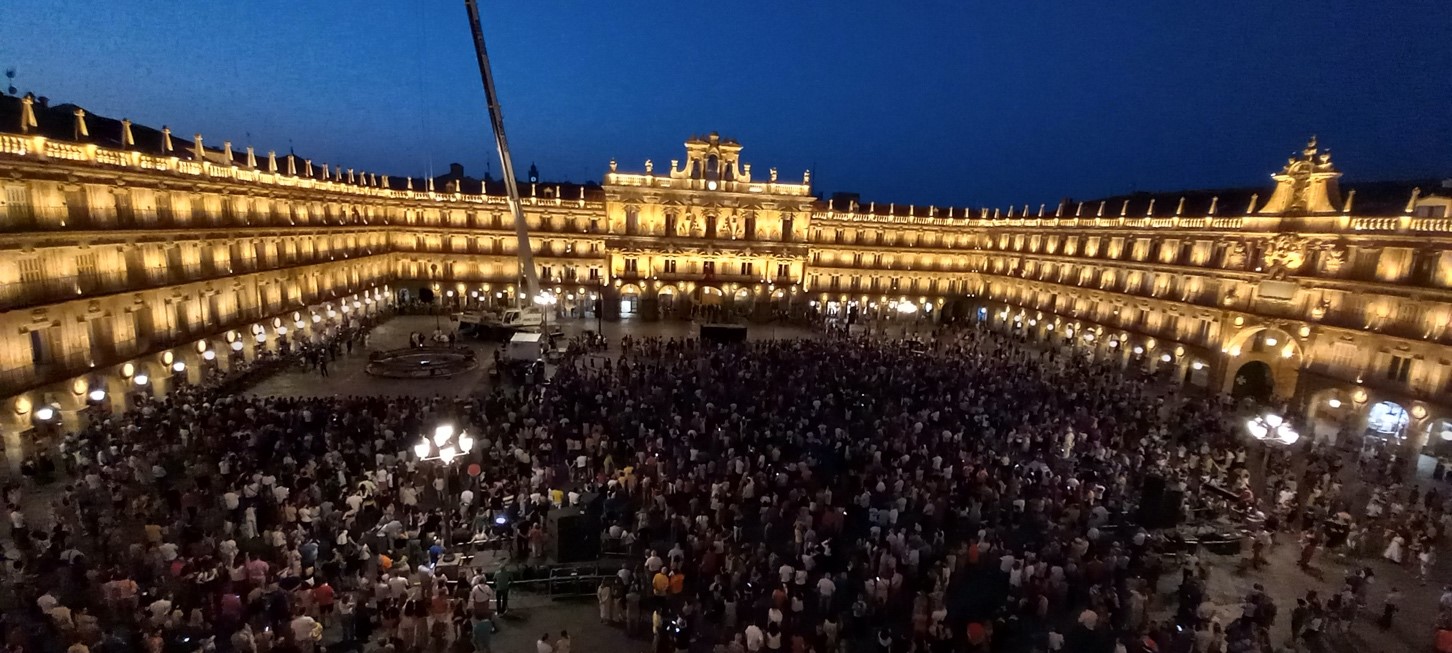
MOTERREY PALACE AND LA PURÍSIMA CHURCH
Continuing along Prior Street, just 50 meters away from main square you would reach the Plaza de las Agustinas and Monterrey. Here you would find two monuments of great interest: the Monterrey Palace, one of the great palaces of the House of Alba, whose title comes from the town of Alba de Tormes, and the Church of La Purísima.
Do visit the Palacio de Monterrey to know about the history of the Casa de Alba https://es.wikipedia.org/wiki/Palacio_de_Monterrey https://www.palaciodemonterrey.com/
In front the Palacio de Monterrey, you would find the Church of La Purisima, which if it is open you can see its altar, with oil paintings by Ribera and Rubens.
https://es.wikipedia.org/wiki/Convento_de_las_Agustinas_e_Iglesia Purisima_(Salamanca)
The Monterrey square have a very nice terrace to eat, dine or have a quiet drink at LA INCREIBLE (don’t expect great gastronomy in this place either).
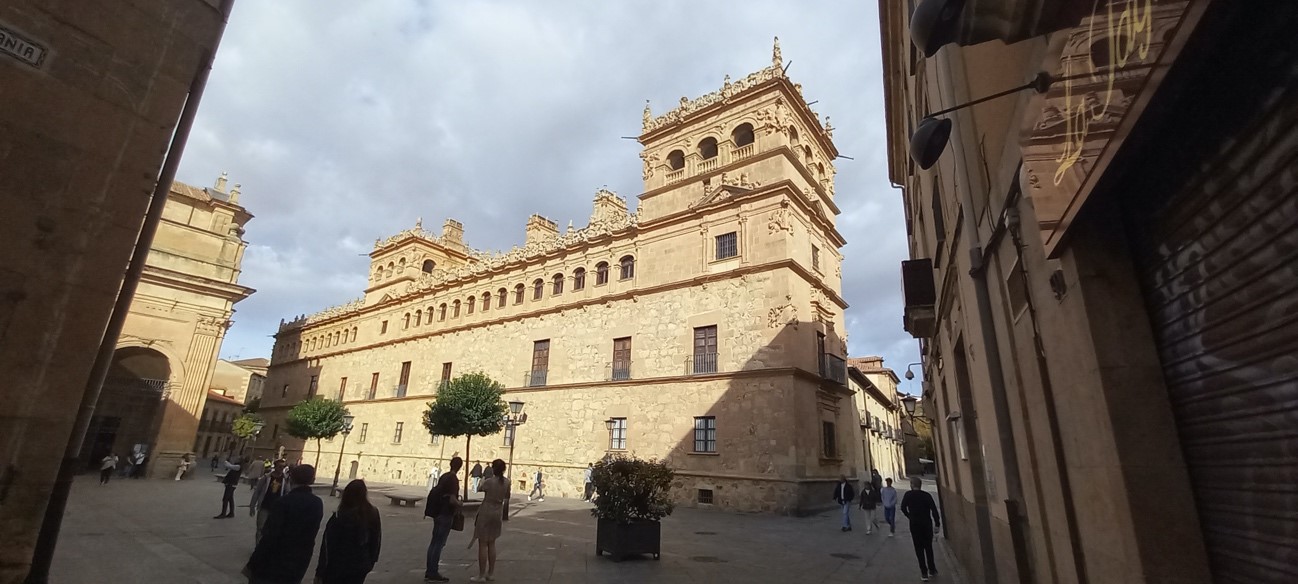
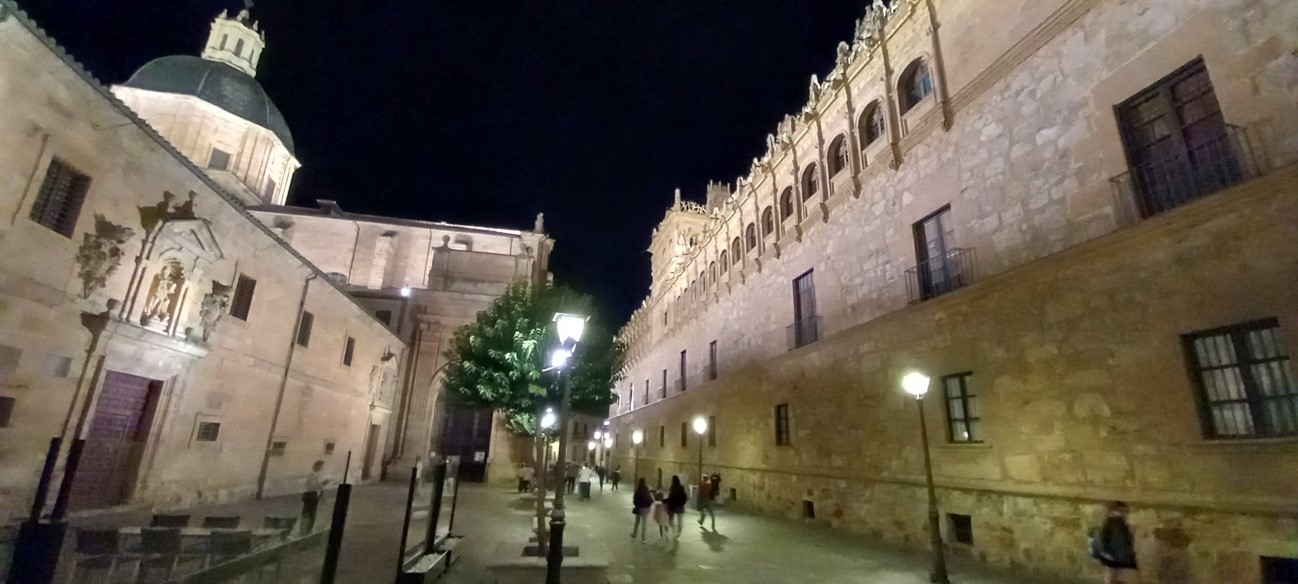
COMPANY STREET
The company street is possibly the most beautiful street in Salamanca, both during the day and at night. Movies and series set in the past have been recorded here. On your left, starting from Palacio Monterrey, we find the CHURCH OF SAN BENITO, where you can find a carved prickly pear on its doorway when looking to the left of the entrance. If it’s open, it’s worth going in.
https://es.wikipedia.org/wiki/Iglesia_de_San_Benito_(Salamanca)
In the Plaza you would find a very nice restaurant inspired by an old stable (OROVIEJO).
Continuing to the right you would find the UNIVERSIDAD PONTIFICIA DE SALAMANCA. Private university where careers such as nursing, journalism, psychology are studied… It has a very nice patio where Woody Allen gave a Jazz concert, attached to it there is the majestic CLERY, which competes with the cathedrals for the greatness of the city. Not much appreciated its greatness for being boxed in between buildings. You could stop and look up to see it in all its splendor. You can climb the tower and enjoy the panoramic view of the city. Your visit is highly recommended (SCALA COELI) https://torresdelaclerecia.com/)
https://es.wikipedia.org/wiki/Universidad_Pontificia_de_Salamanca
https://es.wikipedia.org/wiki/La_Clerec%C3%ADa_(Salamanca)
In front of the Clerecia you would find the CASA DE LAS COCHAS, an iconic house with shells on its façade. It is said that there is a treasure under one of shells. Currently it is a municipal library. You can visit its patio and from its upper balcony you can see the enormous towers of the Clerecía.
https://es.wikipedia.org/wiki/Casa_de_las_Conchas_(Salamanca)
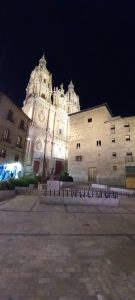
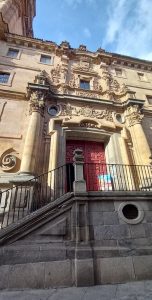
When you reach the end of the street, it is worth turning around to look up. you have reached the corner of the 3 pussies. The people here say: “That’s tall, that’s pretty, that’s cold.” The High for the towers of the Clerecía, the beautiful for the enclave and the cold for being one of the coldest places in Salamanca where the wind is boxed.
UNIVERSITY OF SALAMANCA AND LIBREROS STREET
Continuing along Rua Antigua Street, you would find a very well decorated Pub to have a coffee or a drink depending on the time (THE IRISH THEATRE), you arrive at CALLE LIBREROS.
The mythical Calle Libreros, which was once the guild street that bears its name, is the street that houses the University of Salamanca.
The UNIVERSITY OF SALAMANCA, another must-see places in the city, is of the oldest universities in the world – in 2018 it turned 800 years old. Its imposing façade gives entrance to an enclosure with a magnificent history. You can visit the classrooms where Fray Luis de León, Unamuno, Fernando de Rojas, Hernán Cortés, Góngora, Calderón de la Barca taught classes. At the top you can admire the incredible and impressive library and chapel of the University. In the square in front, from the schoolyard you can see the facade and look for the famous frog and other details such as the sins of the students on top of the rectory building.
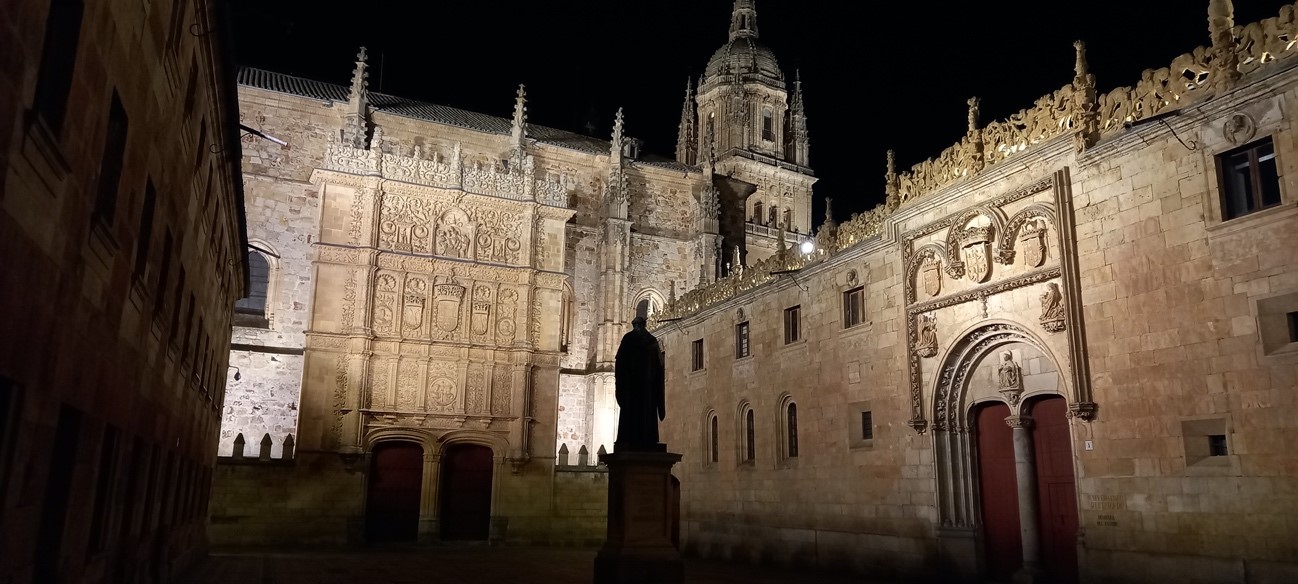
https://es.wikipedia.org/wiki/Universidad_de_Salamanca
https://es.wikipedia.org/wiki/Escuelas_Mayores
https://es.wikipedia.org/wiki/Escuelas_Menores_(Salamanca)
https://es.wikipedia.org/wiki/Cielo_de_Salamanca
Continuing along Calle Libreros on the left you would find Casa Museo de Miguel de Unamuno or Casa del Rector
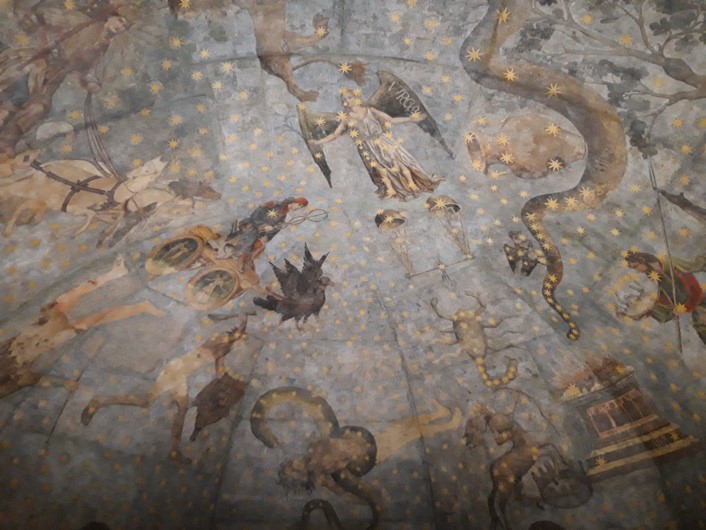
https://es.wikipedia.org/wiki/Casa-Museo_de_Unamuno
On Calle Latina there are several bars to have a nice coffee, wine or tapas in a university atmosphere.
Turning left along Calle Tavira you would arrive at another jewel of our city, the CATHEDRALS OF SALAMANCA.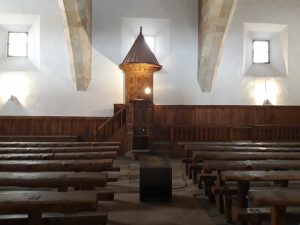
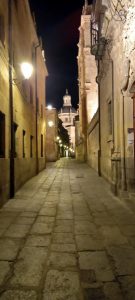
SALAMANCA CATHEDRALS
Arriving at Plaza Juan XXIII, you can see two cathedrals, the Old one in the Gothic Romanesque style and the new one in various styles, late Gothic, Renaissance and Baroque. It is one of the largest cathedrals in Spain and its bell tower with height of 110 meters is also one of the tallest in our country.
It is worth your visit and go up to the roofs and bell tower (IERONIMUS. https://ieronimus.es/)
https://es.wikipedia.org/wiki/Catedral_Vieja_de_Salamanca
https://es.wikipedia.org/wiki/Catedral_Nueva_de_Salamanca
After finishing the visit you can walk through the Plaza de Anaya, where you would be able to contemplate the Cathedral, the Anaya Palace that gave rise to Radio Nacional de España (currently Faculty of Philology) and have some tapas in the mythical EdelWeiss (try the potatoes meneas and jeta, a classic food of the city)
https://es.wikipedia.org/wiki/Palacio_de_Anaya
https://lacronicadesalamanca.com/148610-bombas-en-anaya-y-el-origen-de-radio-nacional/
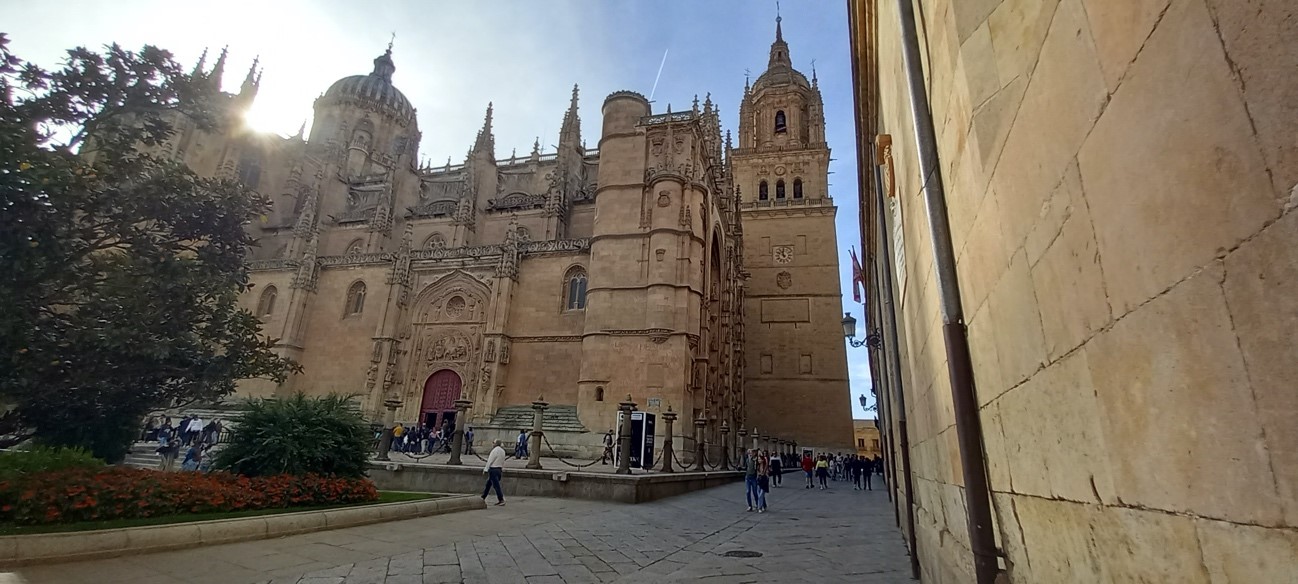
Continue the walk bordering the cathedral on Tentenecio street and turning onto Gibraltar street (which in the controversy of the papers of the Archive of the Spanish Civil War changed its name to the Expolio)
https://elpais.com/cultura/2006/02/17/actualidad/1140130804_850215.html
In this street you can visit the General Archive of the Spanish Civil War. Not well known, but very interesting to see a preserved Masonic lodge. Further on you would find another jewel of Salamanca, LA CASA LIS, an art deco museum of great value. It is worth seeing the facade of this palace towards the river, especially at night.
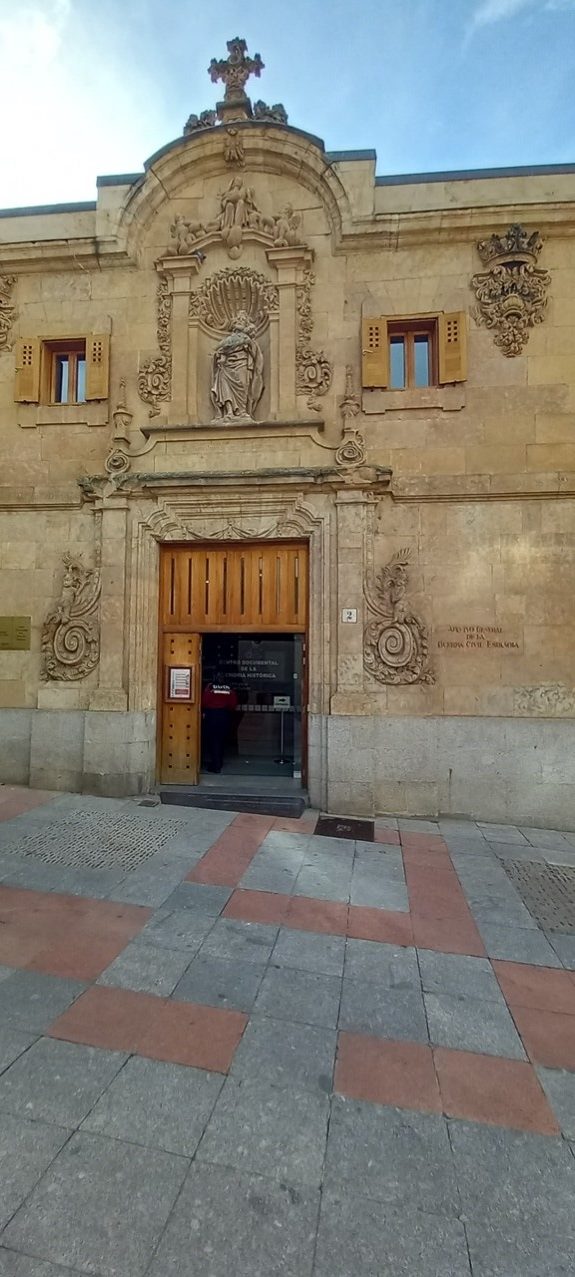
https://www.museocasalis.org/nuevaweb/
https://es.wikipedia.org/wiki/Casa_Lis
Continuing around the cathedral you can see the Torre del Gallo and the Puerta del Patio Chico de la Catedral. A little further on you can find the Huerto de Calixto y Melibea, it is worth taking a romantic walk through its gardens and leaning over the walls with beautiful views of the Tormes River.
https://es.wikipedia.org/wiki/Huerto_de_Calixto_y_Melibea
Retracing your steps to Tentenecio street, you can continue down to the banks of the Tormes River.
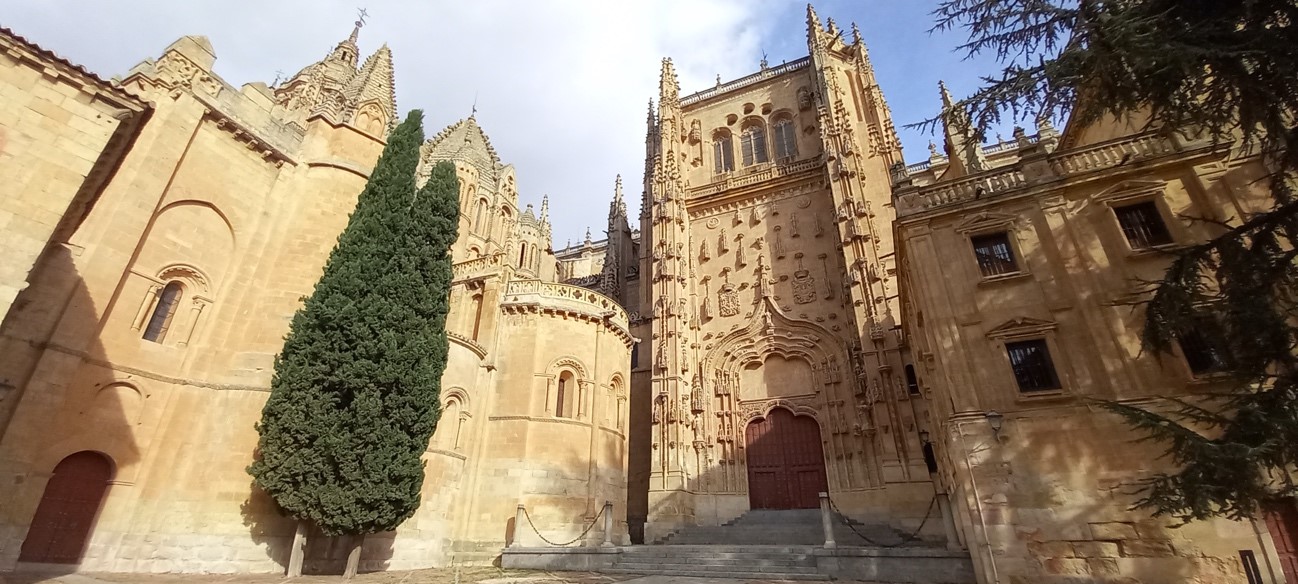
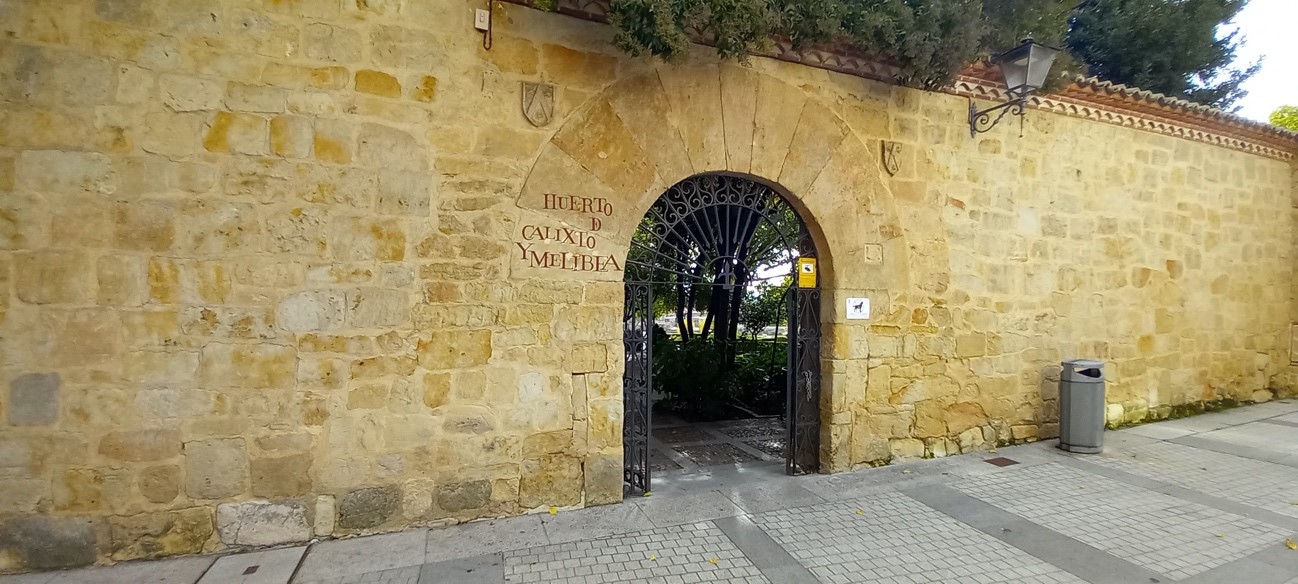
ROMAN BRIDGE AND THE SHORE OF THE TORMES
Arriving at the river bank you would find the Church of Santiago of a slightly different style, being a Mozarabic church of Mudejar style.
https://es.wikipedia.org/wiki/Iglesia_de_Santiago_del_Arrabal_(Salamanca)
You can go to see a museum of great value in Salamanca: The Museum of Automotive History, which hosts a wide variety of cars from different eras. at least curious ( https://museoautomocion.com/ ) and the facade of the Lis house, it becomes more beautiful on the night walk.
Continuing towards the Roman Bridge, you will come across the statue of Lazarillo del Tormes and el Verraco. You must crossing the bridge, when you reach the end turn around and take one of the iconic photos of Salamanca.
https://es.wikipedia.org/wiki/Puente_romano_de_Salamanca
The route continues along the shore in the direction of the New Church of the Arrabal. You can stop if the season allows it at the PACHAMAMA RESTAURANT, with excellent views and a varied menu.
Just below the restaurant on the river pier, you can capture another photo with the reflection of the cathedral in the water.
Continue walking along the shore and go to the other side of the Enrique Estevan bridge, which was the second bridge to be built in Salamanca after the Roman Bridge, with a style similar to the Eiffel Tower.
During the day and more at night, here you can take another photo of Salamanca.
https://es.wikipedia.org/wiki/Puente_de_Enrique_Estevan
Now you can cross the bridge and return to the city center and go up Calle San Pablo.
Before going up Calle San Pablo you can go to the well of Las Nieves, a well where the snow brought from the Sierra de Francia or Béjar was kept for its conservation and use.
https://salamanca.es/es/propuestas-especiales/item/11178-pozo-de-nieve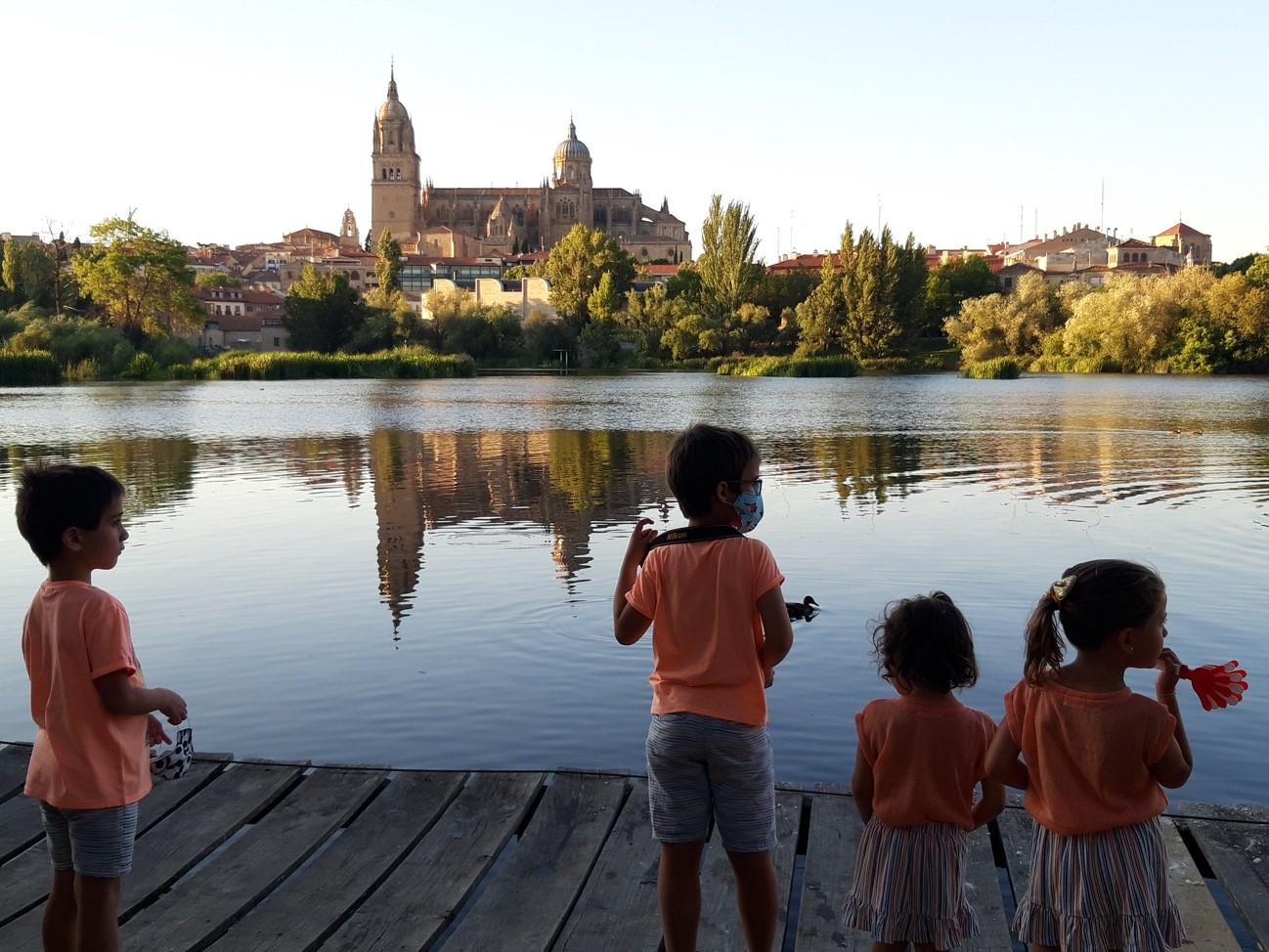
SAN PABLO STREET
Going up, the first thing you would find on the left is the CAVE OF SALAMANCA, a place of occultism and witchcraft in Salamanca, where it is thought that the devil taught classes.
https://es.wikipedia.org/wiki/Cueva_de_Salamanca

Continuing you would arrive at the DOMINICS OR CHURCH CONVENT OF SAN ESTEBAN. In any city it would be a cathedral, but in Salamanca it is one of the great ones. It has an imposing façade and a visit to the Convent does not disappoint. Columbus stayed in it when he visited Salamanca to defend his trip to the Indies.
https://es.wikipedia.org/wiki/Cueva_de_Salamanca
https://www.conventosanesteban.es/
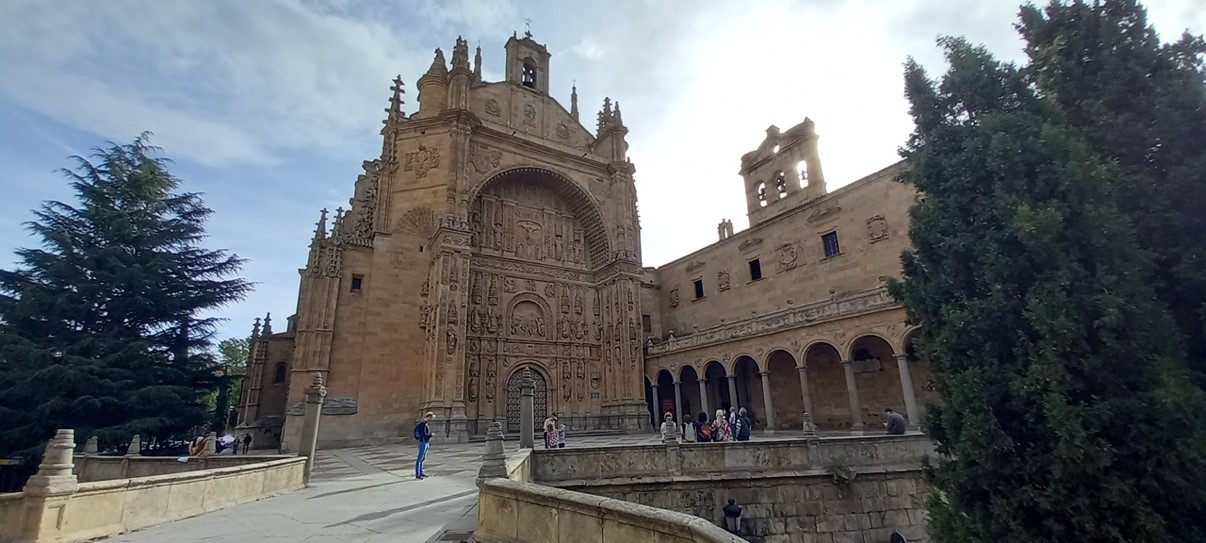
Next to the Convent we have two of the best restaurants in Salamanca, with a Michelin star. RESTAURANT MENT located in the Hotel Don Gregorio and the RESTAURANT IN LA PARA (we have seen it born and grow in the city, great choice).
Going up the street you would arrive at the Plaza de Colon, where the courts are located in the old Convent of the Trinitarios Descalzos, the Church of San Pablo, the Orellana Palace, the Torre de Anaya and the Torre del Clavero. An entire enclave of buildings with a lot of historical interest.
https://es.wikipedia.org/wiki/Plaza_de_Col%C3%B3n_(Salamanca)
https://es.wikipedia.org/wiki/Palacio_de_Orellana
https://es.wikipedia.org/wiki/Torre_de_los_Anaya
https://es.wikipedia.org/wiki/Torre_del_Clavero
https://es.wikipedia.org/wiki/Iglesia_de_San_Pablo_(Salamanca)
Going up the street if you look to the left you would see PALACIO DE LAS SALINAS, a palace with a beautiful patio, which usually houses art exhibitions, bonsai and the Nativity scene at Christmas. Don’t hesitate to go inside. 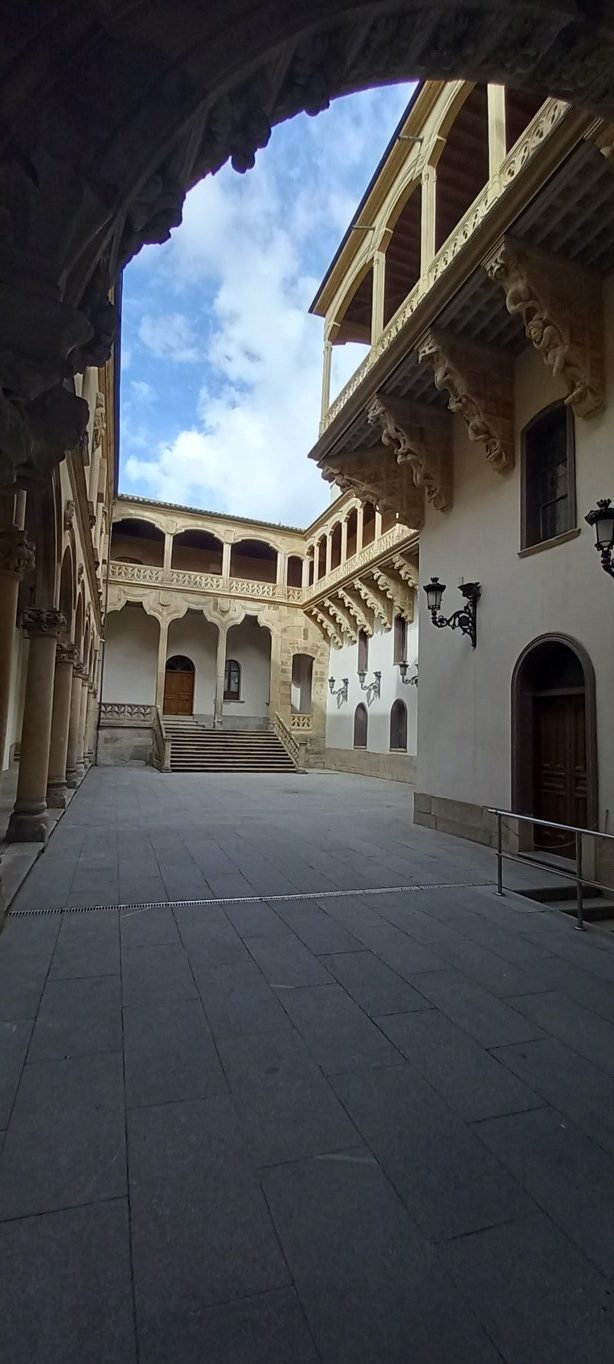
https://es.wikipedia.org/wiki/Palacio_de_la_Salina
Turning down Calle Felipe Espino you would reach Calle Rua Mayor, an emblematic street in Salamanca with multiple tapas bars and restaurants, as well as sausage and ham shops.
In this area, next to the Plaza Mayor, the tour of the essential things to see in Salamanca ends.
Recommendations for restaurants, bars and shops in this area around the Plaza Mayor are as follows.
- Rio de la Plata Restaurant: traditional food and good products
- Mesón Gonzalo: traditional and good quality food
- Bar Casa Vallejo: good pinchos that you can see at the bar, a classic place from Salamanca
- Bar la Viga: traditional tapas from Salamanca with Jeta, potatoes, grilled loin, chichas… A classic
- Tapas 2.0 and 3.0: more elaborate quality tapas, also for eating.
- Revolutum: have a coffee or drink under the slightly provocative mural.
- Doze Restaurant: quality food
- Confitería la Industrial: to buy the traditional hornazo of Salamanca
- Cuzco Winery; quality design tapas, gastrobar
- Grand Hotel Bar: afternoon and evening drinks
- La Morcilla Restaurant and bar: blood sausage from different places
- Casa Montero Food Restaurant: quality food
OTHER PLACES TO SEE OUTSIDE THE ROUTE
- ARZOBISPO FONSECA PALACE: palace with a very beautiful patio, rooms in the upper part with beautiful paintings, with a restaurant for a good menu of the day.
https://es.wikipedia.org/wiki/Colegio_del_Arzobispo_Fonseca_(Salamanca)
https://colegiofonseca.usal.es/
- HACIENDA ZORITA: Located a few kilometers from the city, historical site where Christopher Columbus negotiated his trip to the Indies. It has a highly recommended restaurant and a wine cellar that simulates the hull of Columbus’ ships.
- CALLE TORO Y ZAMORA: commercial streets and shops
- PLAZA DE LOS BANDOS: sometimes with ceramic or clay markets
- PLAZA DE LA LIBERTAD and ESPOZ Y MINA: with multiple bars and restaurants for tapas and drinks. Copeo in Hernández and Fernández, Tapeo in Quid Divinum and La pitera (cheap) and a good steak in Vaca Vieja
- VAN DICK STREET: street far from the center, but a mythical street of pinchos at a good price with multiple places. Grilled tapas and also elaborated. Café de Chinitas, La Fresa, La Goleta, Bodega Chicho, El Montadito, Don Cochinillo, Grandmother’s patio, Rufos.
- PULPERIA DE PACO: An emblematic place in the city to eat Octopus and seafood in a relaxed way and at a good price. It is in front of the Train Station for travelers who arrive in this way to the city.
WHAT TO SEE IN THE PROVINCE OF SALAMANCA
FRANCE MOUNTAINS
The Sierra de Francia, about 70 km away from the city of Salamanca, is one of the most beautiful natural enclaves in the province of Salamanca, located to the south and bordering the province of Cáceres. The most beautiful towns in the area are in the Parque Natural de las Batuecas.
Begin your visit at the Peña de Francia, a mountain that gives its name to the region. At its peak is the Sanctuary of the Virgen de la Peña, highly venerated in those parts.
From there you can visit the best-known town par excellence in the region, LA ALBERCA, one of the first towns in Spain with the Pueblo Bonito de España award. Stroll through its cobblestone streets and admire the typical architecture of the area. Before reaching it, you can stop at the Fermín sausage factory to buy sausage at a good price.
https://es.wikipedia.org/wiki/La_Alberca_(Salamanca)
From there you can climb the Portillo pass and contemplate the views of the Batuecas valley. Descend and visit the Monastery of the Las Batuecas and enjoy a bath in the natural pools, which you would reach after crossing a path along the edge of the river along a sidewalk made of roots.
Go back and continue the visit to MOGARRAZ, a picturesque town, with the typical architecture of the area. It highlights the photos hanging from the houses of a permanent exhibition by Florencio Maillo.
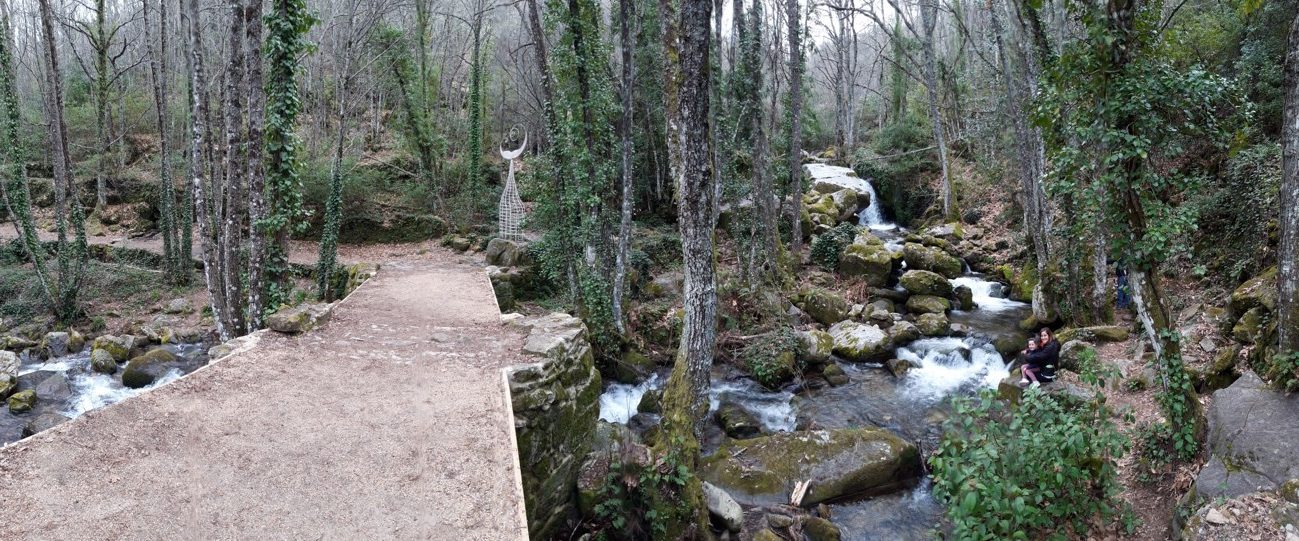
From here you can follow the famous hiking route, EL CAMINO DEL AGUA, a circular route that passes through MONFORTE DE LA SIERRA. Small town in the mountains but possibly with the best views of the Sierra from the Viborero viewpoint.
Return to Mogarraz and eat at MIRASIERRA RESTAURANT. If it is full, other options are CALAMA and MESON TAURINO.
https://es.wikipedia.org/wiki/Mogarraz
http://www.salamancaemocion.es/es/que-hacer/actividades-en-la-naturaleza/senderismo/camino-del-agua
https://es.wikipedia.org/wiki/Monforte_de_la_Sierra
Other towns to visit in the area:
- MIRANDA DEL CASTAÑAR: https://es.wikipedia.org/wiki/Miranda_del_Casta%C3%B1ar
- DRYERS:
https://es.wikipedia.org/wiki/Sequeros
- SAN MARTIN OF THE CASTAÑAR
https://es.wikipedia.org/wiki/San_Mart%C3%ADn_del_Casta%C3%B1ar

RODRIGO CITY
City about 100 km from Salamanca, close to the border with Portugal. Population with a complete and highly preserved wall. Inside, there are beautiful palaces and a castle, which is currently a parador. It is worth your visit. You can eat at the CONDE RODRIGO RESTAURANT.
https://es.wikipedia.org/wiki/Ciudad_Rodrigo
THE ARRIVALS
Region located to the west of Salamanca next to the province of Zamora. It is an area with canyons and gorges on the banks of the Duero River, along the border with Portugal.
On the way to the heart of Los Arribes you can stop at a charming LEDESMA town, stroll down its street and contemplate its stately palaces and its views of the river and its magnificent bridge.
You can eat at EL ROCAL
https://es.wikipedia.org/wiki/Ledesma_(Salamanca)
Continue your way to the ALMEDRA dam, one of the largest vaulted dams in Spain, the views are breathtaking and grandiose.
https://es.wikipedia.org/wiki/Presa_de_Almendra
From here make a stop at PEREÑA DE LA RIBERA, following a trail of a few kilometres, you can reach the base of the POZO DE LOS HUMOS, a waterfall of extreme beauty, especially after it rains or thaws. You can also see it from the top, reached by the town of MASUECO
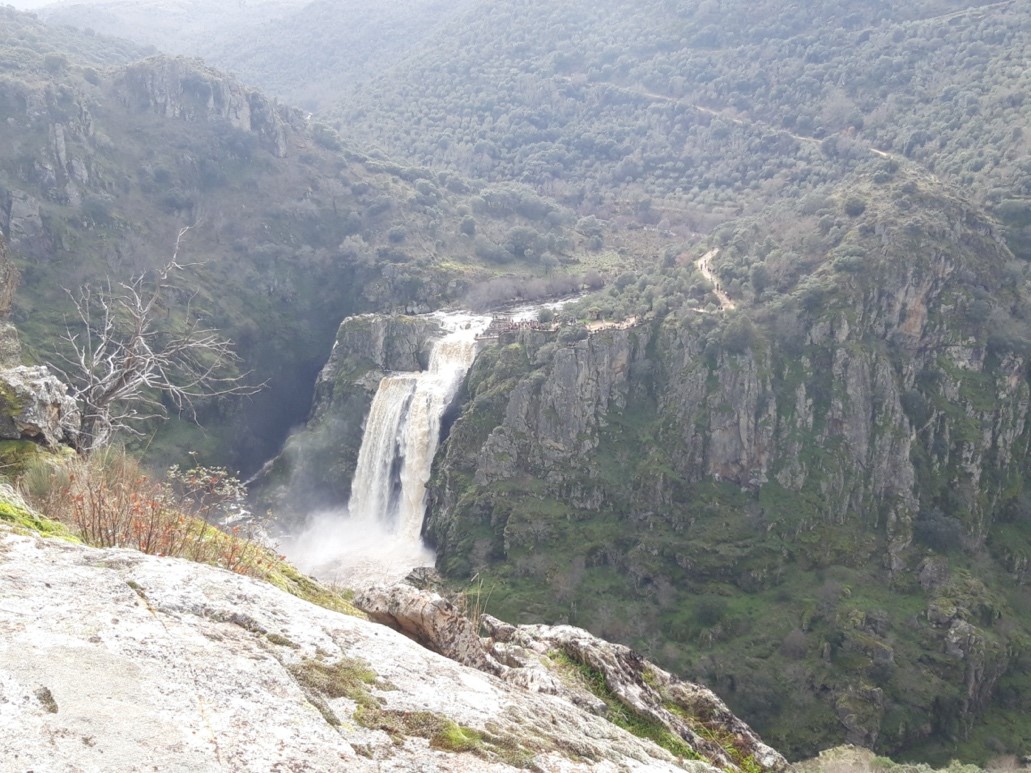
https://es.wikipedia.org/wiki/Pozo_de_los_Humos
Follow the road to Playa del Rostro, in Aldeadavila de la Ribera, there you can make a wonderful river cruise through the Duero River, contemplate eagles, vultures… the majestic canyons.
https://www.corazondelasarribes.com/horarios-crucero-duero.asp
Then, to conclude the day, do not hesitate to go to the FRAILE VIEWPOINT and the ALDEADAVILA DAM. Undoubtedly an incredible dam, one of the highest in Europe. It is worth a visit.
https://es.wikipedia.org/wiki/Presa_de_Aldead%C3%A1vila
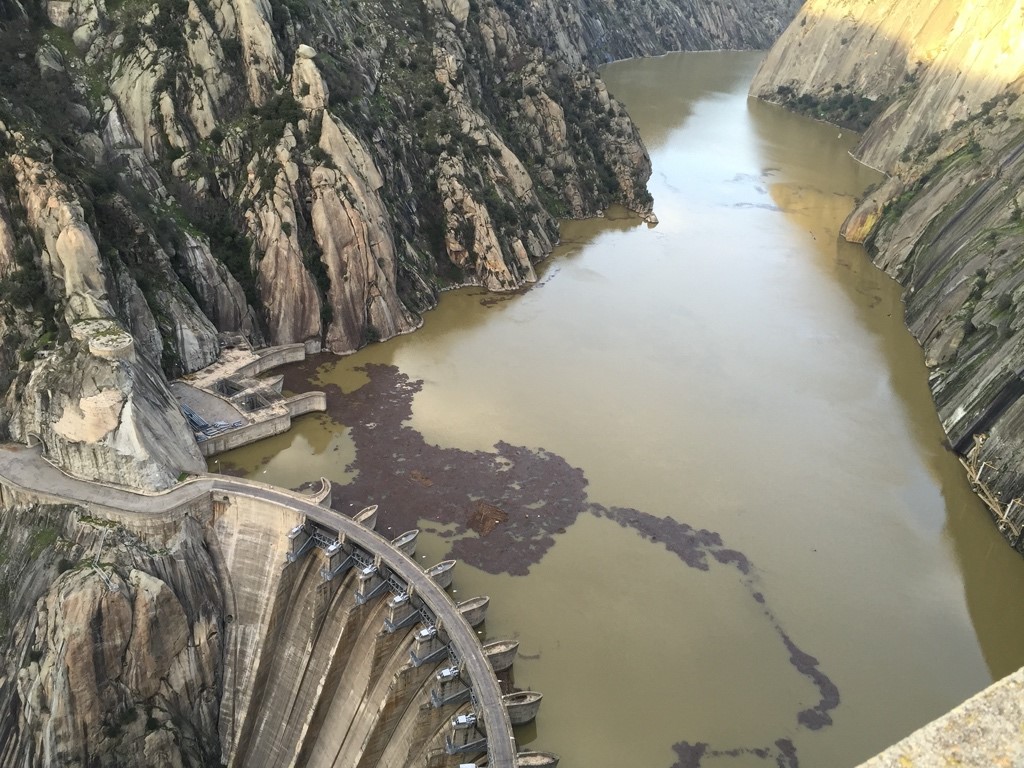
SIERRA DE BEJAR
BEJAR
This mountain town , capital of the region, is a good place both to see the town itself, since it is very attractive, and from there, to visit other towns : Guijuelo, Candelario y Montemayor del Río.
Getting to Béjar is very simple, as the A66 motorway, known as Vía de la Plata, passes right next to it. You will have to turn off at one of the two direct exits, and immediately you are in the town.
Where to eat in Béjar at La Alegría del Castañar Restaurant, next to the bullring..
Very brief history of Béjar: We refer you to our entry dedicated to the Men of Moss and the Corpus Christi Festival . These two elements, promoted since the fifteenth century by the Dukes of Béjar, belonging to the noble house of Los Zúñiga, who were the ones who rehabilitate the fortress and give it the Italian Renaissance palatial touch inside and later built the Renaissance Garden of The Forest.
Also, at the end of the 19th century and the beginning of the 20th, an incipient textile industry created a local bourgeoisie with its cloth factories, on the banks of the river Cuerpo del Hombre and whose mansions transformed some lots, especially on Calle Mayor, with modernist-style buildings. Buildings that are still preserved today.
Main buildings to visit
· The Palace Castle of the Dukes of Béjar
This castle was a fortress that protected the city. Due to its poor condition, Alonso Diego López de Zúñiga y Sotomayor, Duke of Béjar, ordered it to be rehabilitated, and in doing so, although retaining its defensive character, he ended up fitting it into a Renaissance-style fortified palace. Thus, one of the most characteristic elements is its plateresque patio, where a fountain called Venera stands out.
· Church of the Savior
This was a medieval church, enlarged in the 16th century and following. It was considered one of the most beautiful in the area. It was burned in 1936, making most of its interesting coffered ceilings disappear. It was rehabilitated, and although beautiful, they told us that it did not reach what its day was.
· Museum of the sculptor Mateo Hernández
Installed on what was the Hospital and Church of San Gil, of which only its apse and part of its main portal remain; This modern construction of dubious taste houses part of the work of the Bejarano sculptor Mateo Hernández, as well as works by other contemporary sculptors.
· Jewish Museum “David Melul”
Next to the Church of Santa María, and installed in a Gothic mansion, it has an interesting sample of objects related to the Jews in Béjar, which, as we already told you, were protected by the Duke of Béjar given his ability to manage heritage and generate wealth. In addition, inside, there is a model of what the villa was supposed to have been like in the 15th century.
· Church of Santa Maria la Mayor
Built in various stages, this building is a melting pot of styles with Romanesque, Mudejar and Gothic traces. Being in the middle of the aljama, we believe that it may have originally been a synagogue . The most interesting is the Mudejar Romanesque apse and the granite tower, in which a bell tower has been added to the last section.
· Church of Pilar and San José
This church is modern, from the mid-20th century, but built in the Italian neo-Romanesque style that stands out for its originality. It is undoubtedly one of the most striking monuments. It is the second time that we have gone up to visit it, since it is located at the foot of Mount Tomillar; But yes, from it, you can enjoy the beautiful views of Béjar.
Other essential places in Béjar
We have to include several sections of Béjar interest, although they are not directly in the urban area, they belong to the municipality and, of course, we recommend your visit.
·The forest
This renaissance park escaped us once again, as it is not the first time, we have tried to visit it. More so if, like now, it has just been reopened to the public after a long period of remodeling.
· Sanctuary of the Virgen del Castañar, patron saint of Béjar
It is a Sanctuary that is located in a wooded area, of predominantly chestnut trees. It is next to the Béjar bullring and where we ate one day, at the “La Alegría del Castañar” Restaurant.
· Béjar bullring, or “El Castañar”
Whether or not you are fan of bullfighting, this bullring has its importance and interest, since it, is considered the oldest round bullring in Spain. Although, it is known that in the 17th century there was a previous one in a polygonal shape and made of wood; the current construction, in stone, is from the beginning of the 18th century. This square is located on the hill in front of Béjar; very close to the La Alegría del Castañar restaurant, a restaurant where we ate one day
· Route of the Textile Factories
As we have told you, Béjar enjoyed an incipient textile industry that took advantage of the wool resources of transhumance. Taking advantage of the driving force of the waters of the river Cuerpo de Hombre and its own waters, various cloth factories were installed, of which none remain in operation today.
https://www.terranostrum.es/turismo/ruta-por-la-comarca-de-sierra-de-bejar
CALENDAR
The town of Candelario sits on the slope of the mountain range to which it gives its name, it is a Historic-Artistic Site.
It is famous for its narrow and cobbled alleys, the Regaderas, a singular and ingenious element of this town. These are small canals that cross the entire town from the top of the town to its lowest part.
You can visit the Church of Our Lady of the Assumption without a doubt, the most outstanding building in the town.
The Hermitage of the Humilladero is another significant monument. This hermitage located at the entrance of the town, is a secluded work of the eighteenth century.
Among the public spaces of the town, the Town Hall building stands out for its slenderness and generosity. Another of the attractions that the town of Candelario contains are its numerous fountains scattered around various corners, the Batipuertas deserve special mention, another curious element of Candelario, for some it protected the house from the snow that accumulated in streets and entrances due to the frequent snowfall. For others, they allowed the house to be ventilated without fear of the cattle that frequently roamed the streets of the town entering.
In the shelter of the Sierra de Candelario, declared a Protected Natural Area, you would find a great diversity of ecosystems inhabited by a great variety of wild flora and fauna. There you can taste delicious dishes in typical places like Meson La Candela. El Bosque Inn. Candelario Inn . Armando’s Scorching Restaurant
GUIJUELO
Guijuelo is a Spanish municipality and town in the province of Salamanca, in the autonomous community of Castilla y León. It stands out as the most important population center in the southeast of Campo Charro and is considered the capital or service center of the Guijuelo region and the Salvatierra sub-region.
Are famous and of great quality, although they come largely from the Extremaduran and Andalusian dehesas, they find here the ideal place for curing, thanks to a characteristic cold and dry climate.
MONTEMAYOR DEL RIO
It is one of the most beautiful and least known tourism destinations in the province of Salamanca. It is located in a strategic location in the Sierra de Béjar, surrounded by chestnut forests, watching from above the passage of its neighbors from Extremadura. In Montemayor del Río, explore its beautiful streets, its walls and its imposing castle..
We can visit the Castle of Saint Vincent. one of the best preserved and spectacular castles in the province of Salamanca, inside there is a Medieval Interpretation Center and also a restaurant.

